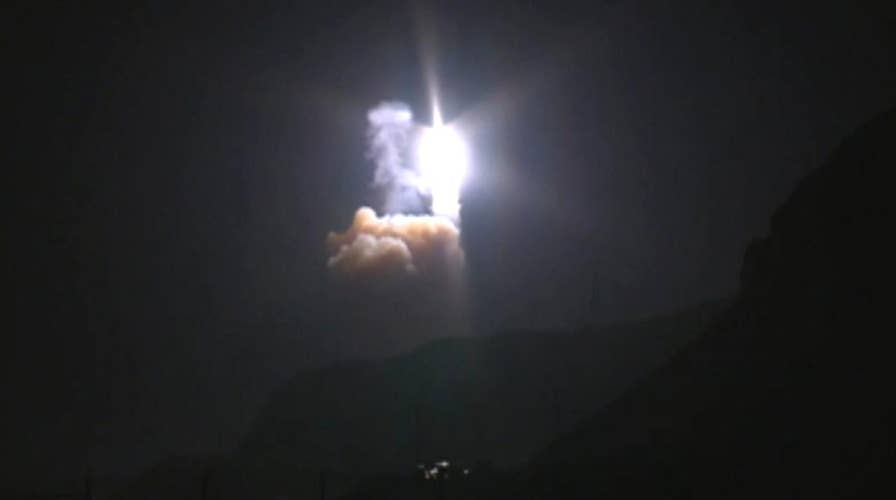Intercontinental ballistic missile flies 4,000 miles in test
Raw video: Minuteman III missile launched from military base in California splashes down in South Pacific
The U.S. Air Force test-fired an intercontinental ballistic missile which traveled over 4,000 miles before splashing down in the South Pacific after launching early Wednesday from a base in California.
NORTH KOREA THREAT: EXPERTS PAINT DARK PICTURE OF WHAT FALLOUT OF PRE-EMPTIVE STRIKE COULD BE
The nuclear-capable missile was unarmed, according to the Air Force, and comes amid increasing tensions on the Korean Peninsula.
The Minuteman III missile blasted off at 12:03 a.m. Wednesday from Vandenberg Air Force Base, 130 miles northwest of Los Angeles.
JAPAN HAS ONLY 10 MINUTES TO TAKE COVER AFTER NORTH KOREAN MISSILE LAUNCH, OFFICIALS SAY
The test was long-planned, according to defense officials. When asked about the timing of the test amid the threats surrounding North Korea, one official told Fox News, "If we had canceled the launch, that would be a story too."
The U.S. Air Force has 450 Minuteman III intercontinental ballistic missiles in underground silos across three bases in Wyoming, North Dakota and Montana. This number will be reduced to 400 in the coming years, according to a senior U.S. military official.
The U.S. military also maintains a fleet of long range B-2 and B-52 bombers capable of delivering nuclear weapons as well as a fleet of ballistic missile submarines. Air Force fighter jets can carry smaller tactical nuclear weapons as well.
The mission was part of a program to test the effectiveness, readiness, and accuracy of the weapon system, Air Force officials said.
The 30th Space Wing commander, Col. John Moss, said Minuteman launches have been essential to verify the status of the U.S. nuclear force and to demonstrate the national nuclear capabilities.
In a Minuteman test, a so-called re-entry vehicle travels more than 4,000 miles downrange to a target at Kwajalein Atoll near the Kwajalein Atoll in the Marshall Islands.
"Team V is once again ready to work with Air Force Global Strike Command to successfully launch another Minuteman III missile," Moss said. "These Minuteman launches are essential to verify the status of our national nuclear force and to demonstrate our national nuclear capabilities. We are proud of our long history in partnering with the men and women of the 576th Flight Test Squadron to execute these missions for the nation."
The 576th Flight Test Squadron will be responsible for installed tracking, telemetry, and command destruct systems on the missile.
Fox News' Lucas Tomlinson and The Associated Press contributed to this report.


